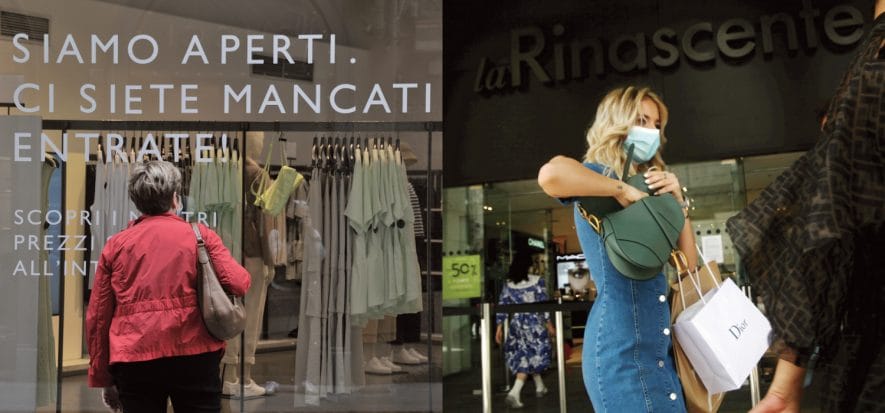A great divide. Dramatic, historic and inevitable. So, it becomes even more important to interpret and understand, as best as possible, the consequences and evolutions. Luxury’s challenges: that’s what we are talking about, in addition to purchasing trends and the behavior of its consumers. Altagamma analyzes the scenarios in its 7th edition of the Consumer and Retail Insight report, based on data provided by Boston Consulting Group and Bernstein. And so? Nothing will be as it was before. Surely it won’t be in the short and medium term, and to a point, even in the long term.
Luxury’s challenges
True-Luxury Global Consumer Insight is the research presented by Boston Consulting Group. Its managing director, Nicola Pianon, highlights a very relevant, and concerning piece of information: 57% of consumers won’t be making “significant purchases” in the short term. Let’s call it “caution” in an optimistic scenario where consumer trust should increase and so should consumption levels. Also because, according to BCG, this “recovery” isn’t likely to happen in the next few months according to 43% of respondents, says BCG (based on a sample of 12,000 interviews worldwide of the so-called ‘Very Important Consumer’).The sentiments is shared across the world, with one relevant exception: China. In other words, 77% of high-end Chinese consumers believe in a “rapid recover”.
Product highlights
Covid-19 is a negative divide, we said. It couldn’t be any different, given that, as said by Altagamma, the progressive lockdown has closed down the world and stopped a decade of growth that the luxury industry was set on continuing. In other words, growth before Covid-19 was expected to be between +3% and +6% as of 2022. Post-Covid greatly changed the outcome. In 2020 alone the decrement of the personal luxury segment will be of between -35% and -45% (fashion and accessories), while experiential luxury will likely decrease even further: -40%/-60%. The outcome is that the following categories will be the ones suffering the most: formal shoes, handbags, small leather goods. Those benefitting the most, on the other hand, will be those relating more to a more “intimate and private” type of consumption, such as casualwear and, of course, sneakers.
The challenge of pricing
Luxury, “excess” stock, temptation to set up sales to get rid of it. It’s one of the most relevant topics now, as shown by Gucci in the last few days with its decision (following others) to increase the prices of certain models of handbags. Luca Solca of Bernstein, commented on this topic explaining that “a critical matter for the luxury segment is the convergence of forces that bring foot traffic for full-price items to decrease. Thus, brands are trying to build a close system to limit traffic dispersion”.
Those that can, increase prices
Mr. Solca explains that Gucci & Co try to keep “top consumers” close, to limit their temptation of implementing “hard-selling” strategies. Such strategies were followed during Covid-19 online mostly. So, “Gucci and other brands increase their prices to cover the slowdown of business, and they do so because they know that the reference consumers are very responsive”. The consequence: there is a new section being created within the luxury segment. One that, on one end, puts those that can one side and those that cannot on the other. Knowing which strategy is the correct one in the medium-period is (another) one challenge for the luxury segment.
Picture: Milan, May 2020 (Imagoeconomica)
Read also:
- The four major weaknesses of post-virus luxury market
- Brands have only one way to get rid of the stock (without discounts)










